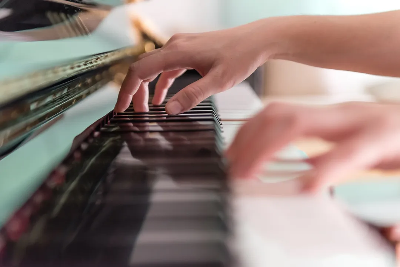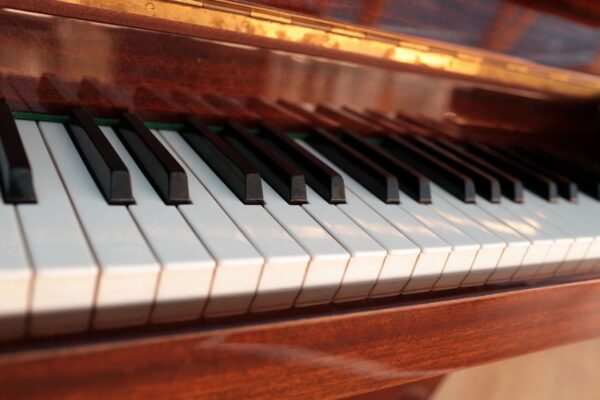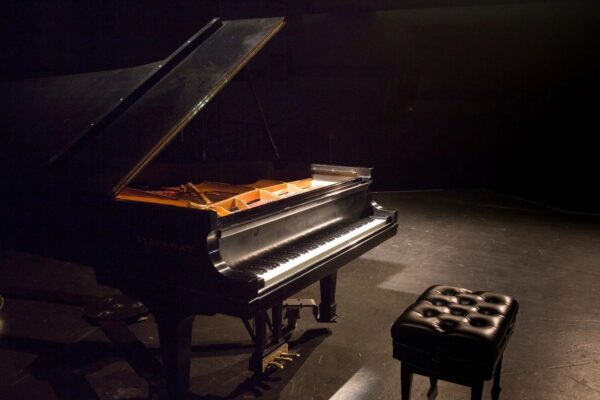If you’re among the savvy buyers of pianos, you recognize that your piano isn’t merely a beautiful piece of furniture, but a complex and intricately crafted instrument. To safeguard this significant investment and maintain the joy of playing a piano in top condition, regular maintenance is of utmost importance. Proper care not only ensures your piano’s optimal sound quality and playing experience for years to come but also helps you avoid costly repairs down the road. Let’s dive into essential maintenance tips to help your piano thrive.
The Ideal Environment
The placement of your piano significantly influences its longevity and performance. Opt for an interior room, safeguarding the instrument from direct sunlight – a major contributor to finish discoloration and wood warping. Minimize the piano’s exposure to temperature fluctuations by avoiding exterior walls and direct proximity to heat sources such as radiators, fireplaces, and air vents.
Piano construction relies heavily on wood and felt components, both of which are highly sensitive to humidity. Maintain ideal relative humidity levels within the 40-60% range. In arid climates, a room humidifier protects the wood from drying and cracking, ensuring tuning stability. Conversely, a dehumidifier is essential in damp environments to prevent swelling, sticking keys, and potential metal component oxidation. Ultimately, minimizing temperature fluctuations is vital; sudden changes stress the piano’s structure, impacting tuning and overall integrity.
Routine Cleaning: Safeguarding Your Piano’s Finish & Playability
Keeping your piano free of dust and maintaining those gleaming keytops is essential for preserving your instrument’s appearance and playability.
Dusting the Exterior
- Use a soft, lint-free microfiber cloth to gently wipe the piano’s exterior surfaces. Choose a cloth designated just for your piano as this minimizes the risk of introducing grit from other household uses.
- Follow the direction of the wood grain to avoid scratches and minimize streaks.
- Feather dusters should be avoided, as they can stir up dust or cause tiny scratches.
Dusting the Soundboard
For safely cleaning the soundboard and the area between the keys, it’s best to consult a qualified piano technician. They have the specialized tools and know-how to access these delicate areas without risking damage.
Cleaning the Keys
Identifying Your Key Tops: Determine if your piano has historic ivory or modern plastic keytops. This distinction is crucial, as utilizing incorrect cleaning methods can be harmful.
Ivory Keys: Always seek guidance from a professional piano restorer regarding the specialized cleaning and maintenance of ivory keys. The oils from your hands can discolor ivory over time, and they require different handling than modern plastics.
Plastic Keys: Modern pianos are commonly equipped with plastic keys. Follow these steps:
- Very slightly dampen a microfiber cloth with plain water.
- Immediately dry with a separate, clean microfiber cloth.
If further cleaning is necessary, add a tiny drop of mild dish soap to the damp cloth. Ensure minimal moisture application by thoroughly wringing out the cloth beforehand.
Important Reminders
- Avoid placing objects directly on the piano, as these can cause damage. Use coasters or felt pads under any decorative items.
- Wipe any spills quickly with a clean, soft cloth. Even water spills, if left unaddressed, could raise the wood grain or dull a high-polish finish over time.
- Never use harsh chemicals, abrasive cleaners, or alcohol-based wipes on any part of your piano! These can harm the delicate finishes or components.
- An overlooked cleaning practice: Always wash your hands before playing to minimize transfer of dirt and oils onto the keys.
- For deeper cleaning or if you encounter a stain or spill that you are unsure of how to deal with, it’s always the safest approach to seek the expertise of a qualified piano technician.
Tuning & Regulation
Regular care plays a key role in your piano’s well-being, but ensuring the inner workings function optimally goes beyond what you can do at home. That’s where tuning and regulation by a professional technician come into play:
- Tuning Frequency: For optimal sound and enjoyment, consider regular piano tuning a non-negotiable part of instrument ownership. At a minimum, schedule an annual tuning with a qualified piano technician. During the first few years of a new piano’s life, it may require more frequent tunings (ideally every six months) as the strings and soundboard acclimate and settle. Your technician will meticulously adjust the tension of each string, ensuring your piano’s notes sound precisely at their intended pitch.
- Why Tuning Matters: Pianos are susceptible to going out of tune due to fluctuations in temperature and humidity, the sheer stress exerted on the strings, and simply from regular playing. When a piano is out of tune, it won’t sound harmonious when played with other instruments, can negatively impact a player’s ear training, and leads to faster wear on internal components.
- Regulation: Think of regulation as fine-tuning your piano’s playing experience. It involves intricate adjustments to the piano’s action – the complex mechanical system responsible for how the keys feel and translate your touch into sound. A well-regulated piano offers more precise control, evenness of touch from key to key, and greater dynamic range. While regulation isn’t needed as frequently as tuning, a trusted technician can advise on the best schedule based on your specific piano and how heavily it’s played.
Addressing Minor Issues
Occasionally, you might encounter small problems that cause big annoyances. Here’s what to look for and do about common culprits:
- Sticking Keys: Humidity changes cause wooden key parts to swell, and spills can make keys tacky. Try gently working the key up and down a few times –this may dislodge minor stickiness. For persistent issues, it’s time to call in a technician, as internal adjustments may be needed.
- Squeaks & Buzzes: Start by checking if the noise comes from loose items on or around your piano (music, a wobbly metronome, etc.). If the source is within the piano, a technician will determine if it’s a loose screw, buzzing string, or any other easily resolvable internal cause.
- Pests: Moths can wreak havoc on felt parts, and mice sometimes nest within a piano’s warmth. Be alert to droppings, tiny gnaw marks, or signs of nesting material. Preventative measures are key, such as placing mothballs near (not inside) the piano. Signs of infestation warrant immediate calls to a qualified technician and an exterminator.
Beyond DIY: When to Call a Professional
While routine care is within your capabilities, complex issues are best left to the experts. Call a qualified piano technician for any of the following:
Significant tuning issues: If multiple notes sound drastically out of tune, or your piano won’t hold a tune.
- Regulation needs: To address uneven touch, overly heavy or light keys, or to improve responsiveness.
- Mechanical repairs: Any broken or non-functioning components, such as hammers, pedals, or internal wires.
- Suspected pest infestation: Requires specialized treatment and internal assessments.
Daily Habits for Piano Health
Simple acts go a long way towards extending your piano’s lifespan:
- Close the lid: Shields the interior from dust, spills, and curious pets!
- Clean hands: Reduces dirt and oil transferred to keys.
- No food or drinks: Spills pose a substantial risk to wood and metal components.
Coasters for everything: Protects the finish from glasses, vases, or decorative items.
Conclusion
Reiterate the value of good care on the piano’s longevity and playing experience.
Highlight that while some maintenance needs professional involvement, establishing smart habits helps in a big way.




